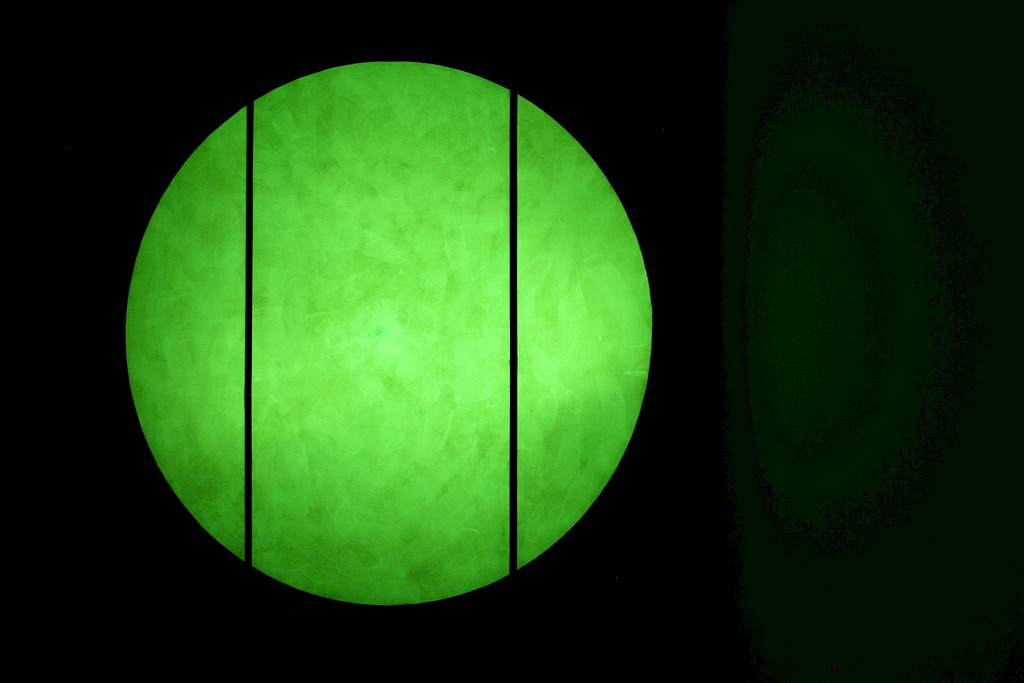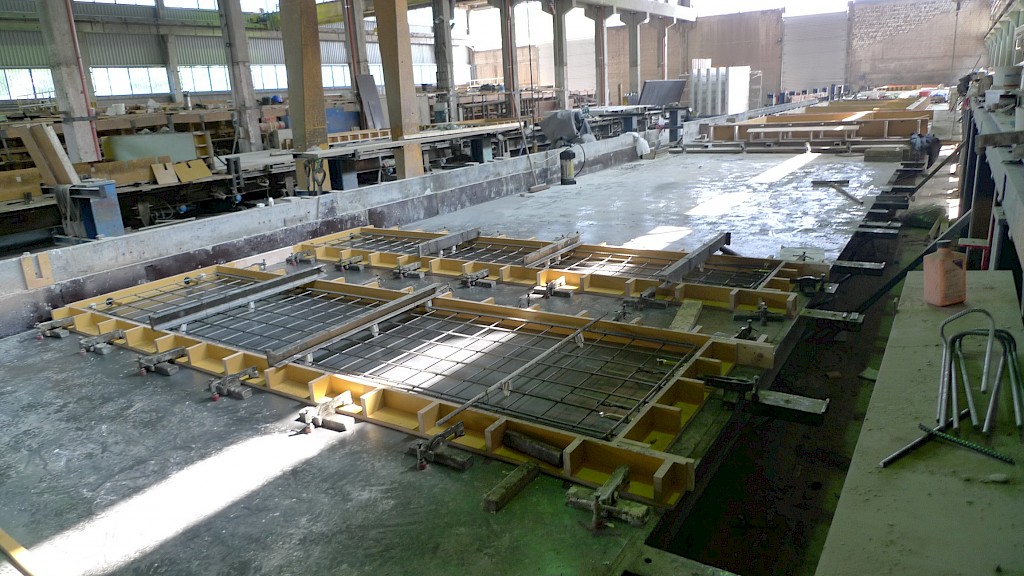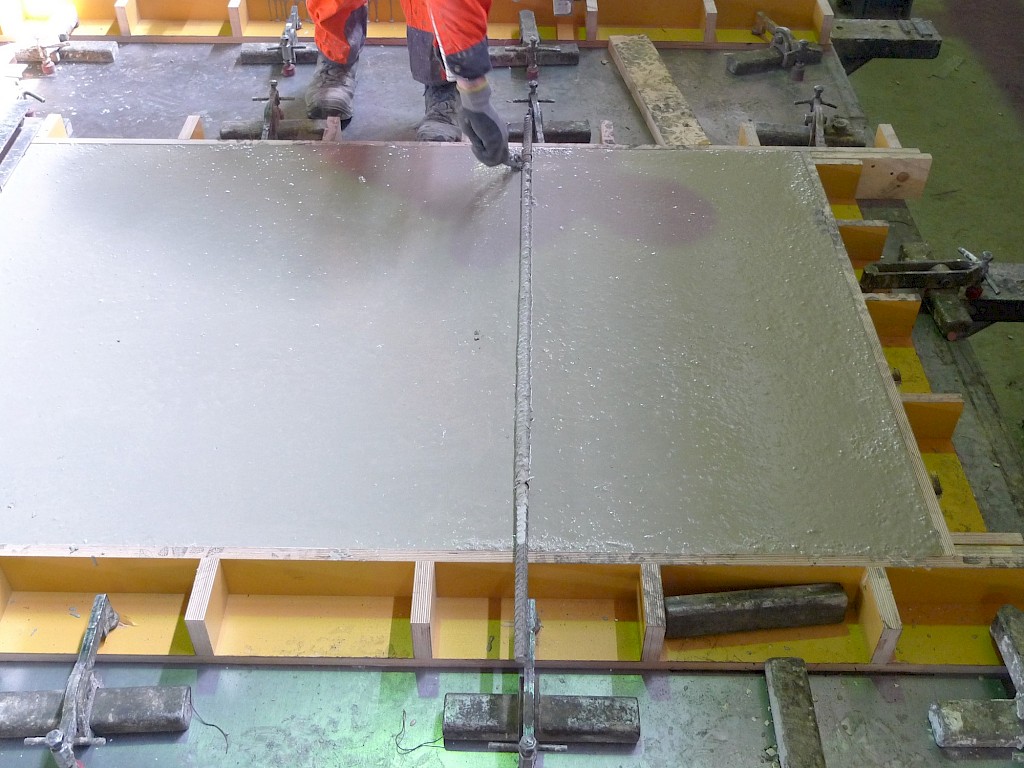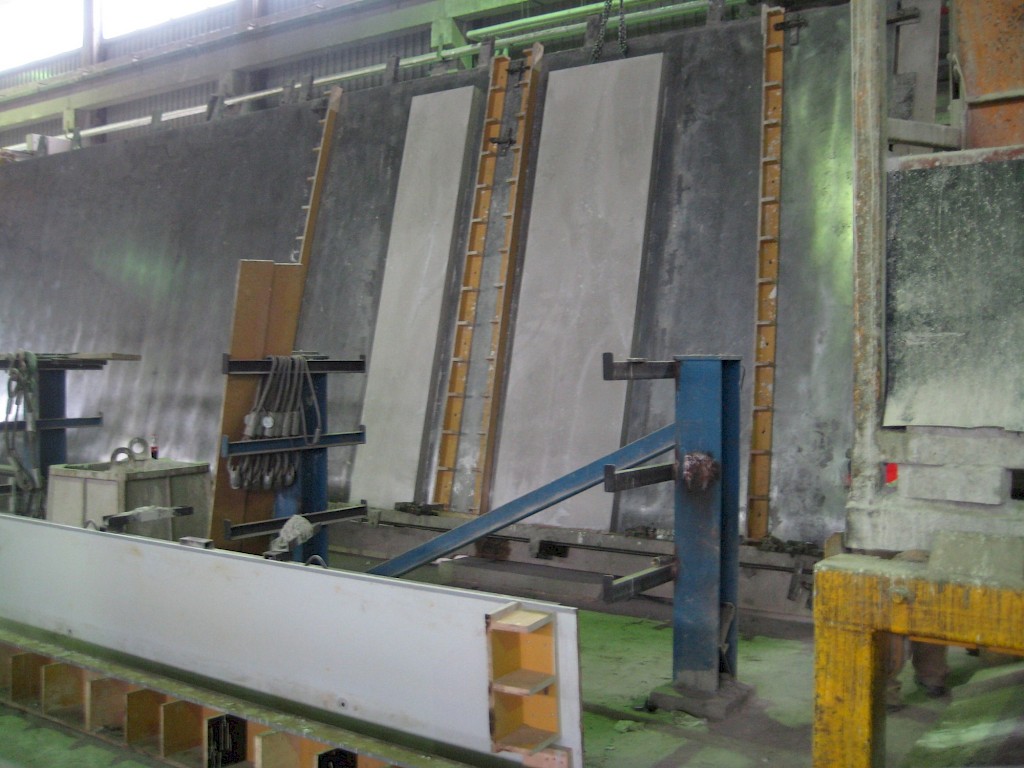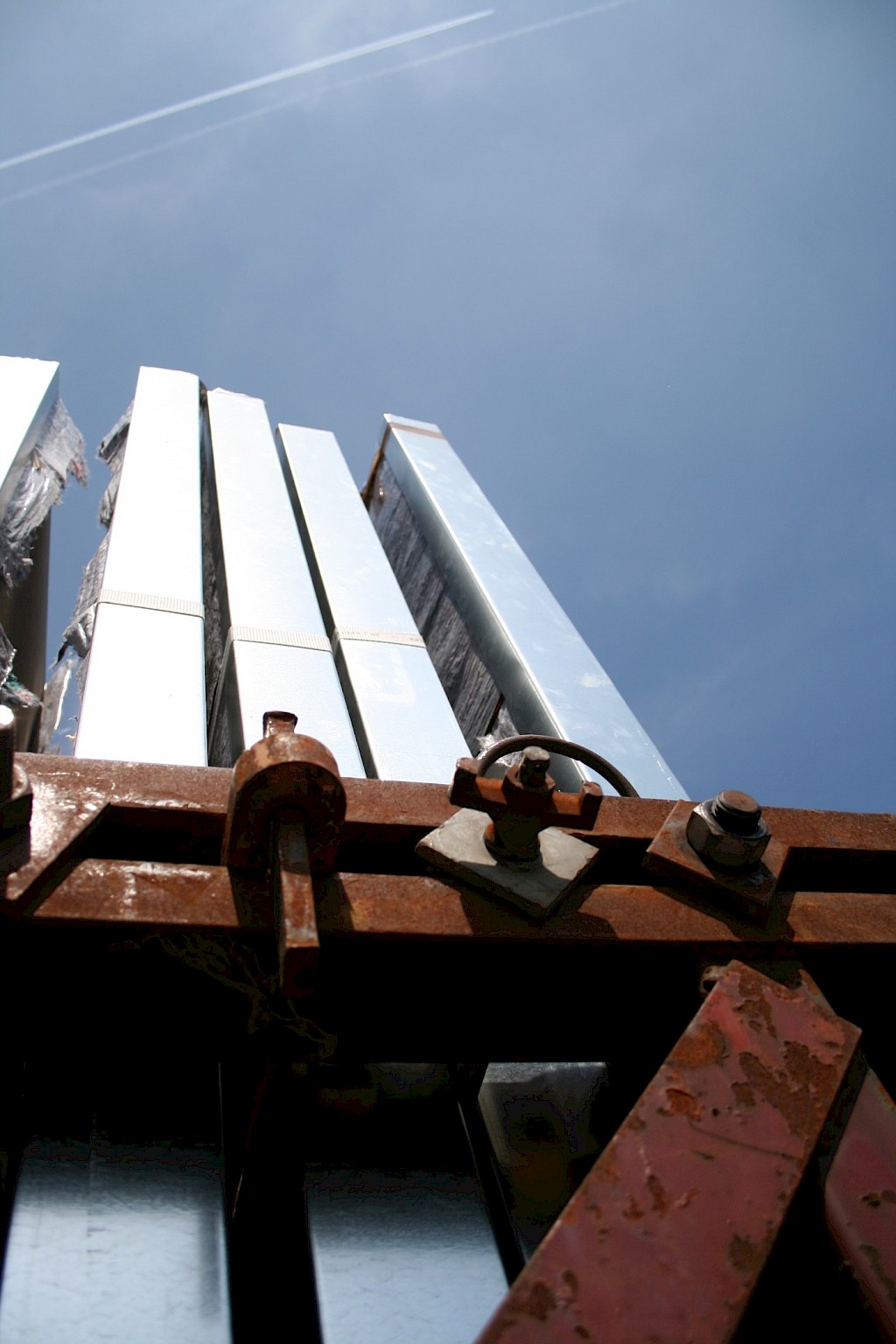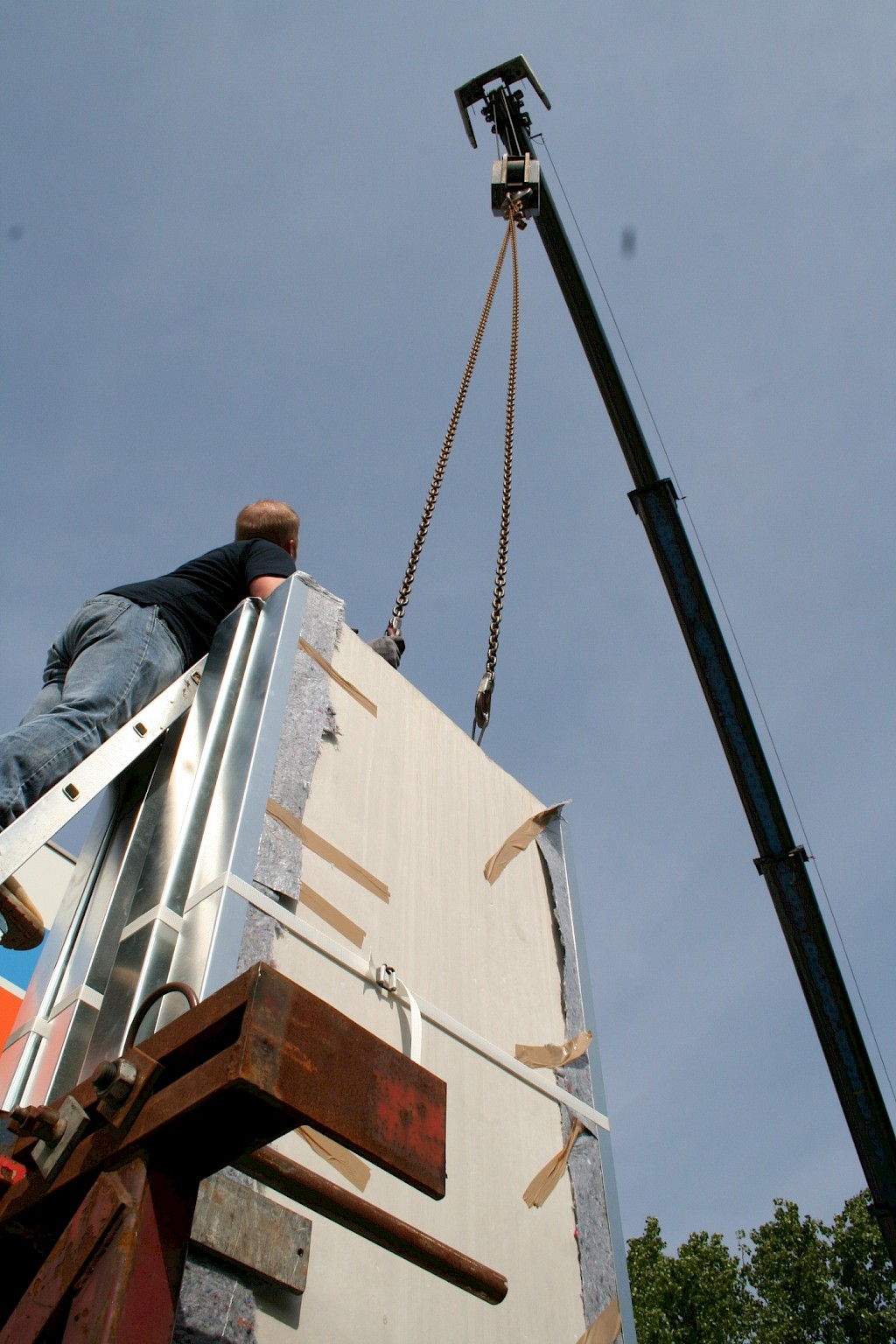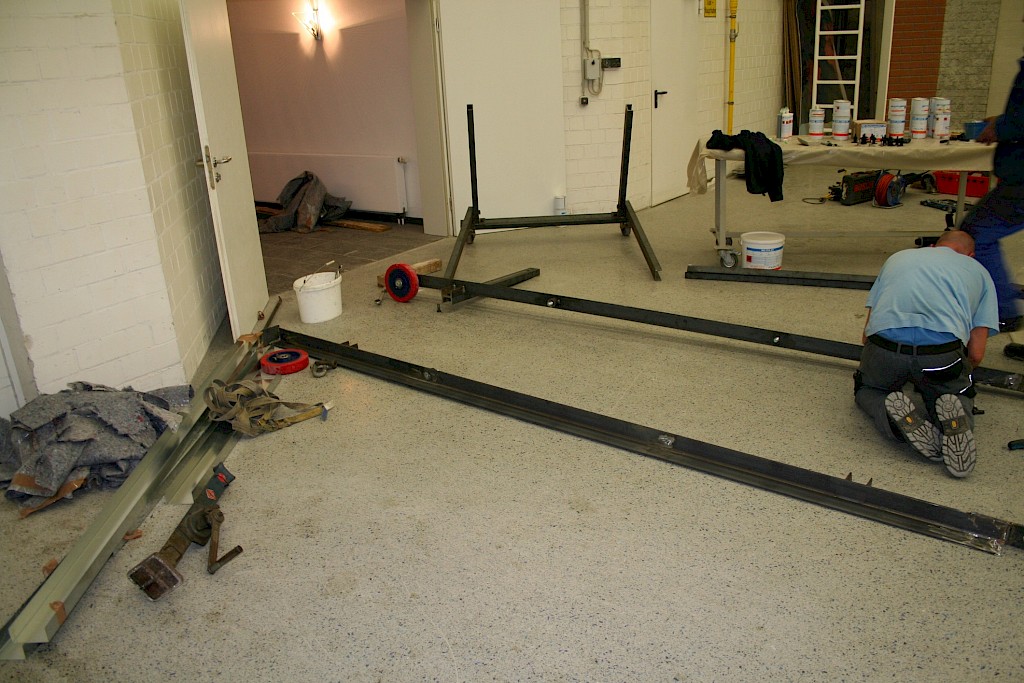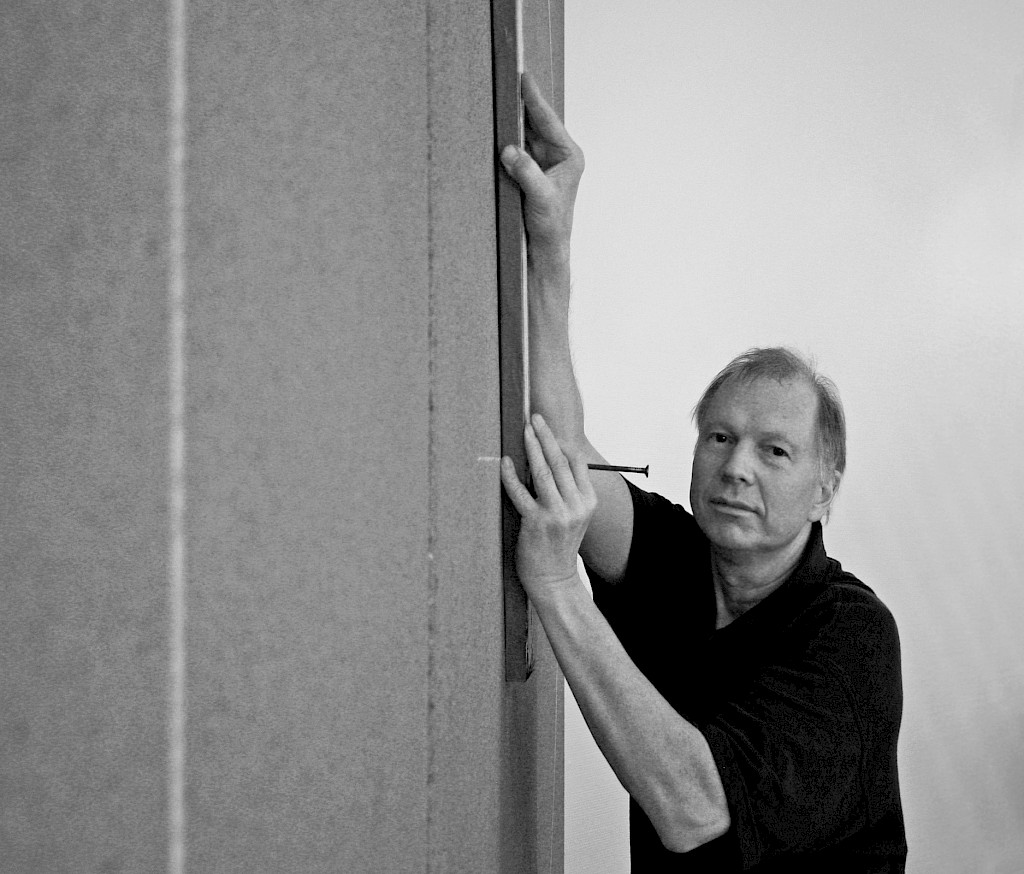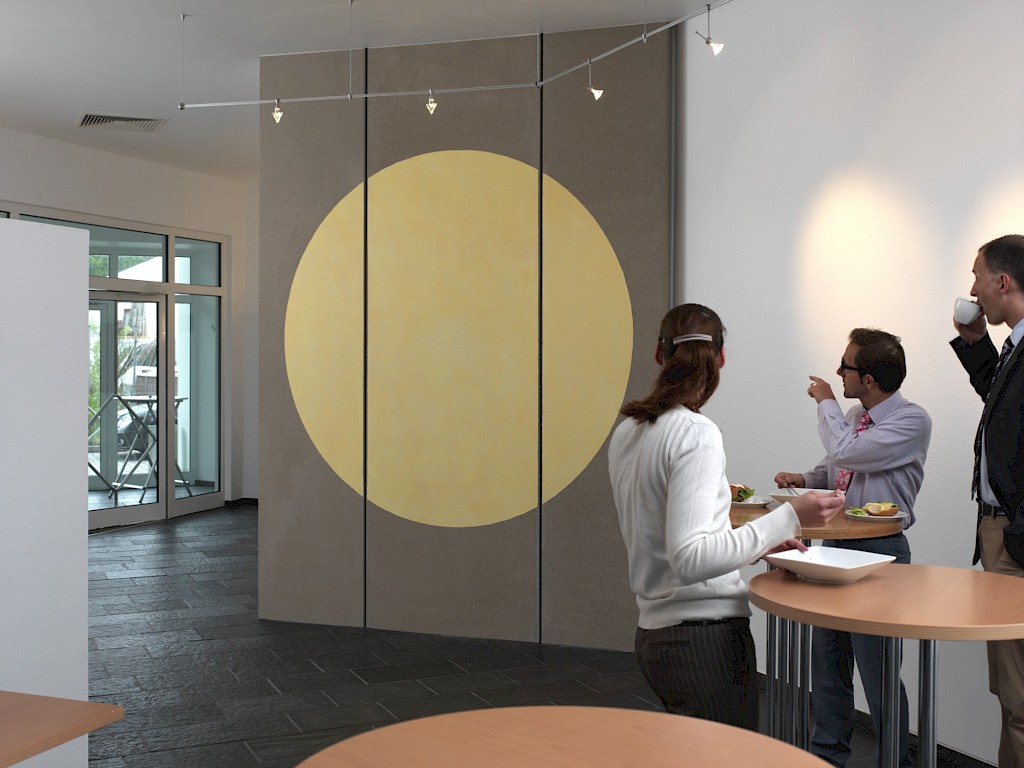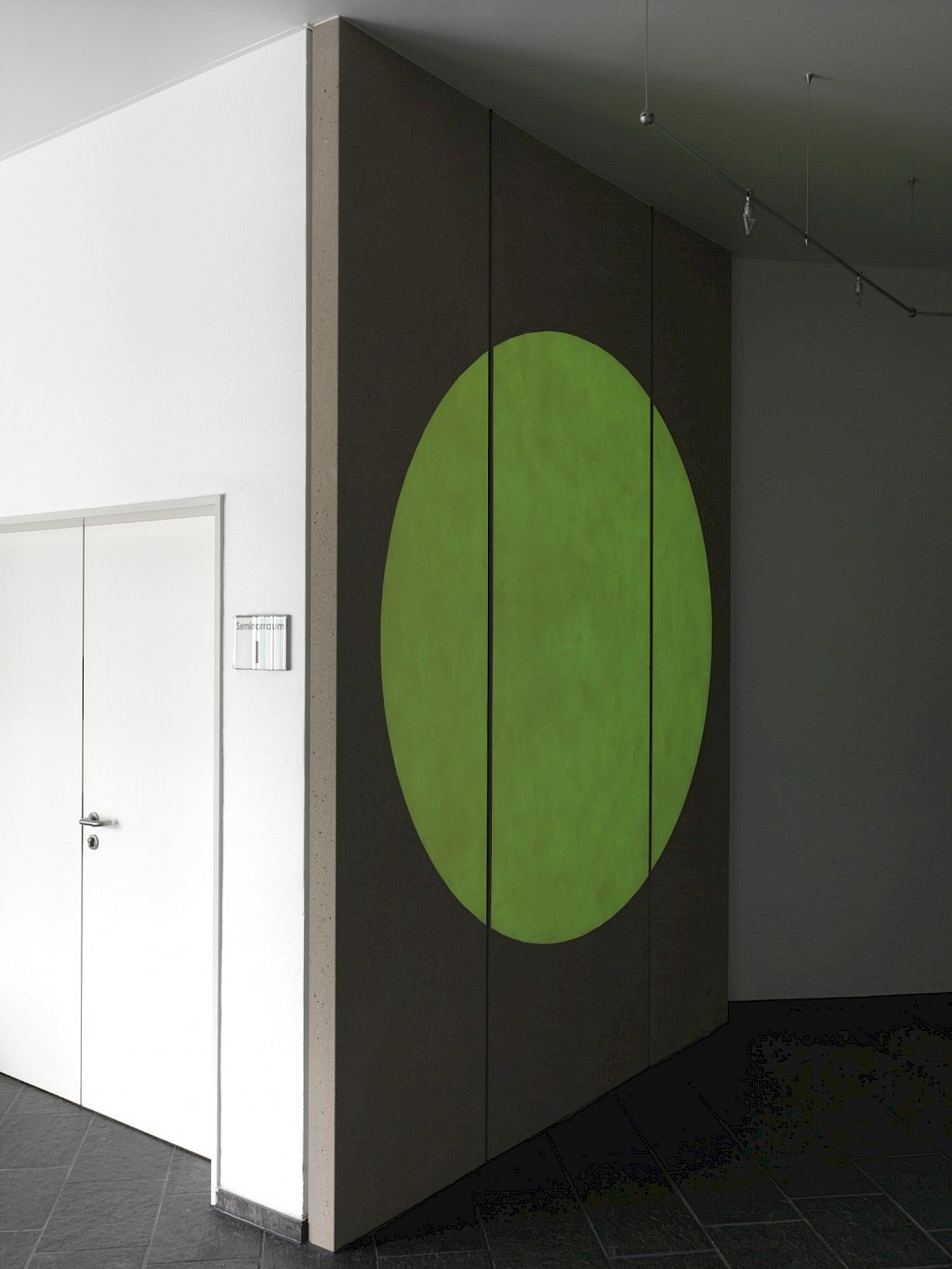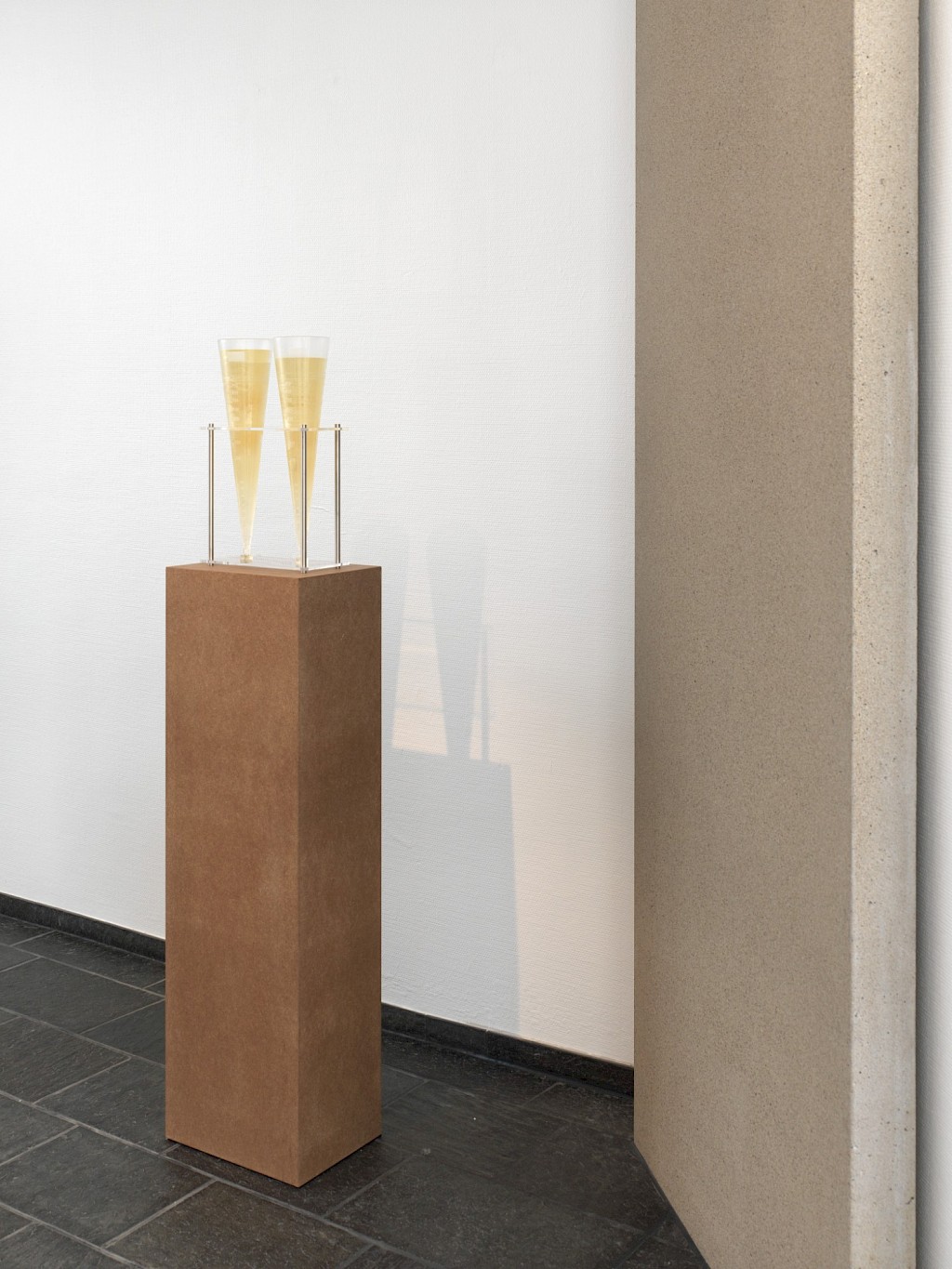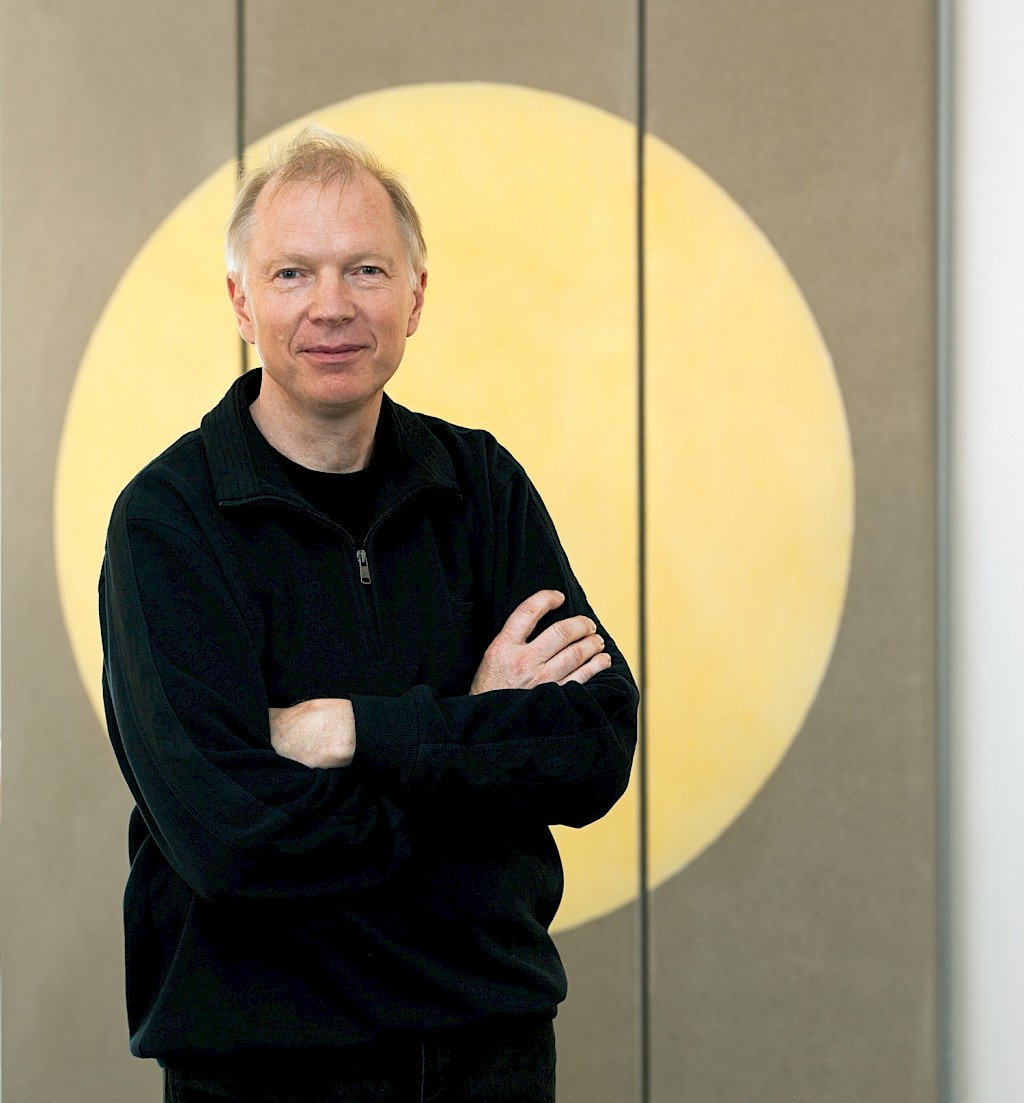MC Bauchemie
Training centre of MC-Bauchemie ,Bottrop
Art in dialogue - Bottrop 2011
In his notes on the project, Werner Haypeter remarked: “The artwork intervenes into what is going on in the room – largely unbeknownst to its user.”[1] This means that the work is not regarded as a decorative addition, but as a “co-player” in the actions and processes taking place when the room is in use. In this, it is important that the art character of the work does not detach itself from the other goings on in the room, but rather integrates itself into it, though in doing so, even if this happens “unawares”, it is perceived as an additional or “foreign” element that heightens and intensifies perception. With the choice of concrete and epoxy resin, Haypeter has opted to use materials the employees and guests of the MC-Bauchemie are very familiar with and hence, in terms of perception, they afford immediate access. An element such as the support frame with the sediment cones is most likely also very well known to the majority of visitors to the foyer. However, what is unusual is its placement on a base, as if this were a sculpture or cultural exhibit. Because they have been staged in such a way, these familiar utensils are no longer experienced as utilitarian objects but now, all of a sudden, as aesthetic forms. Likewise unusual is the artist’s decision to fill the sediment cones with epoxy resin – an uncommon gesture in the business of research and production. This signals to the viewer at the same time, however, that, due to their specific expertise of the material, the employees of the MC would certainly be in a position to restore this part of the work in the theoretical event that the vessels be damaged. Thus, basic questions arise for every open-minded viewer concerning the status of the artwork in connection with the location where it has been set up. Touching upon such fundamental issues is a vital part of Haypeter’s artistic intention, and an essential part of his understanding of art.
A central point of Werner Haypeter’s artistic approach is that he does not consider art as an entity unto itself, as a social sector revolving around its own issues, but rather always intends for artistic activity to be understood as an area of research that is in continuous exchange with other social sub-systems. This social aspect of his art emerged clearly early on. For example, at the end of the 1970s, when he was still an art student at the Kunstakademie Düsseldorf (Art Academy), Haypeter was a member of the “Düsseldorfer Wandmalgruppe” (Düsseldorf wall-painting group), which did huge wall paintings that came out against real-estate speculation and for the preservation of affordable living
space in the Bilk section of Düsseldorf. It is also remarkable that he repeatedly sought out dialogues with the sectors of industrial and technical production, since Haypeter is aware of the fact that creative achievements are not the privilege of art, but artists may draw on the knowledge of the material and the technical know-how coming from other social fields. Art, however, is particularly able to enrich and intensify the perception, experience, and the emotional reaction to materials and spatial relationships. Moreover, this also applies to contexts outside the art business in the narrowest sense. This is the reason why Haypeter occasionally realized temporary room installations in workspaces, such as in an office building at Friedrichplatz Square in Mannheim (2000) and at the Sparkasse Savings Bank in Essen (2002). In light of this research, it should be shown that Haypeter’s installation in the foyer of the MC-Bauchemie Training Center in Bottrop constitutes a logical next step in his artistic research within the societal context of work and industrial production.
[Text extract: Dr. Peter Lodermeyer: Art in dialogue in: "Werner Haypeter's Installation in the Foyer of the Training Centre of MC-Bauchemie in Bottrop". Translated by Elizabeth Volk. Catalogue booklet. Ed. MC-Bauchemie Müller GmbH & Co. KG, Bottrop, 2011 ]
"Setting unconscious processes in motion "Interview with Werner Haypeter in "MC aktiv" " (pdf | 255 kb)
